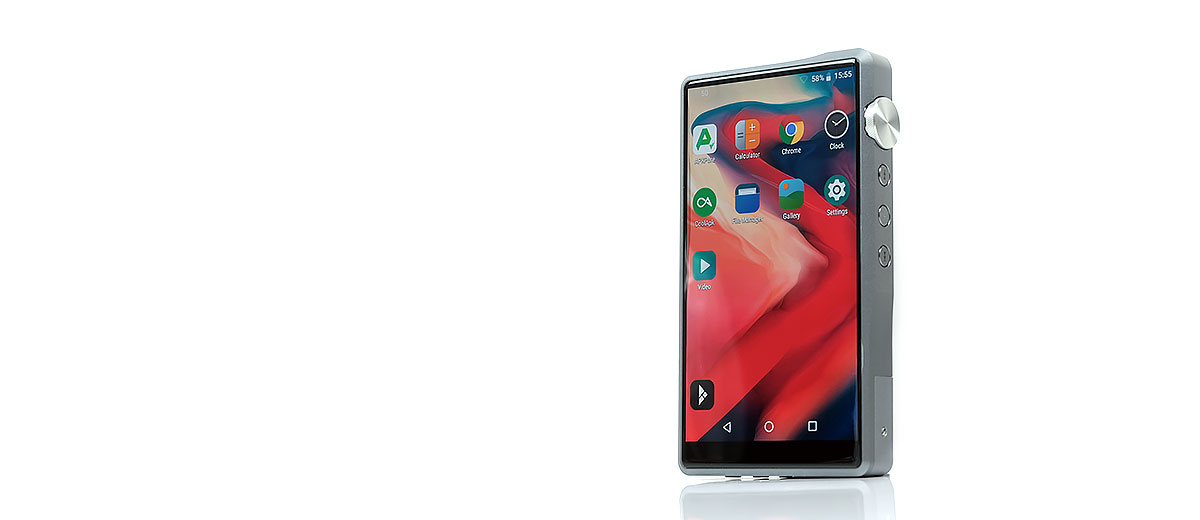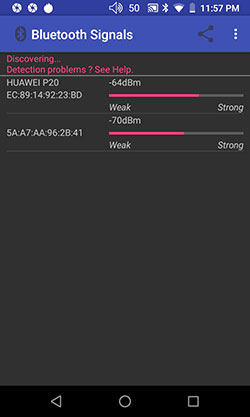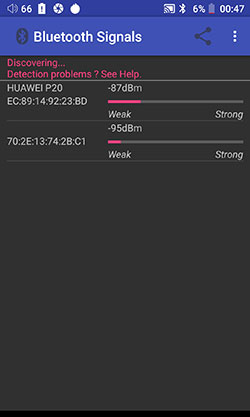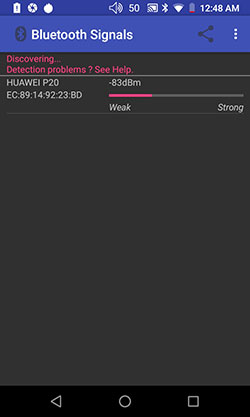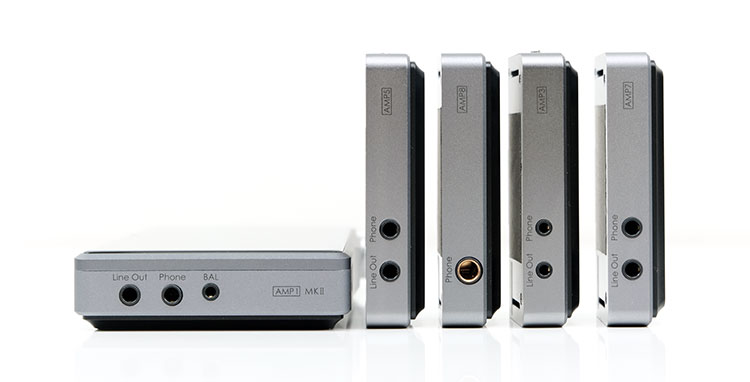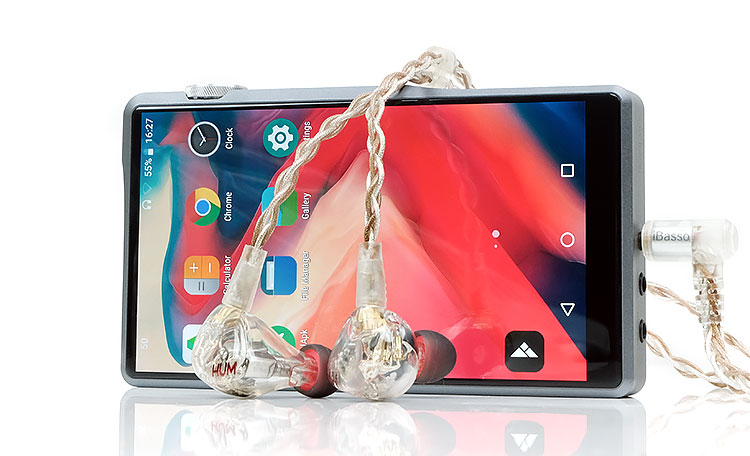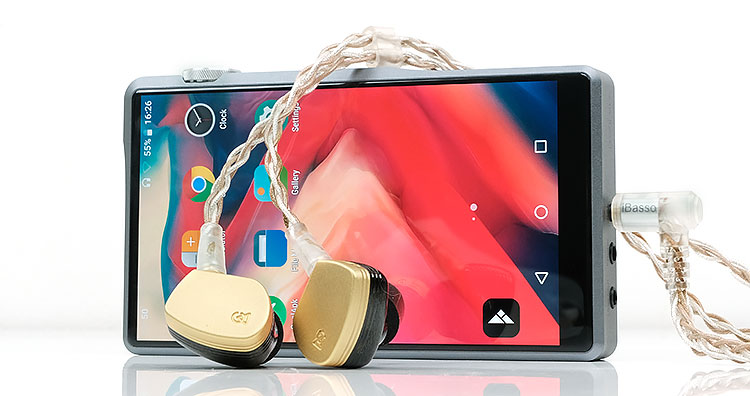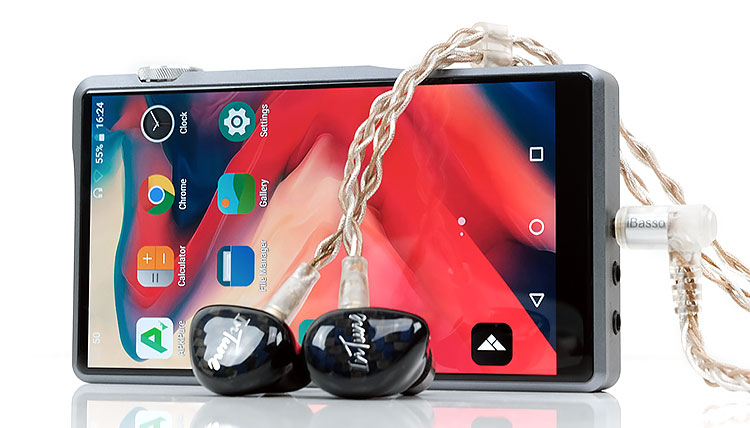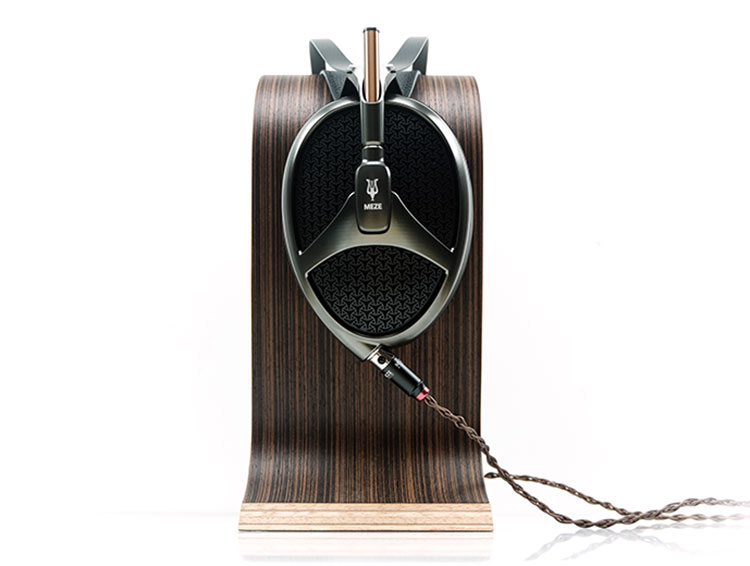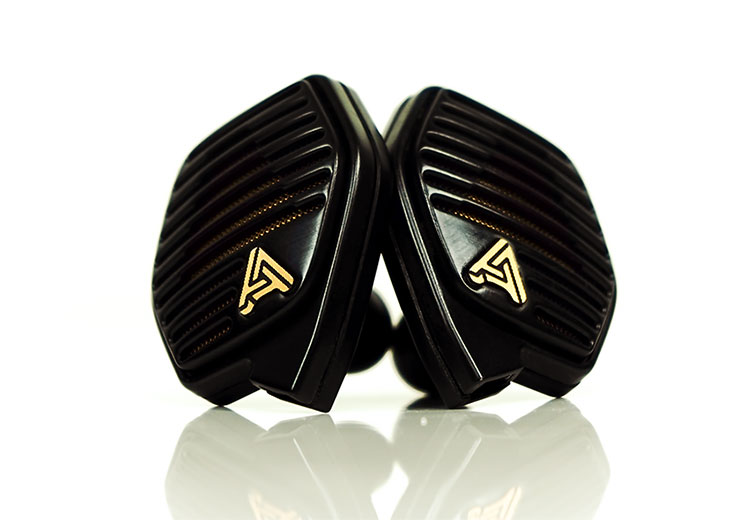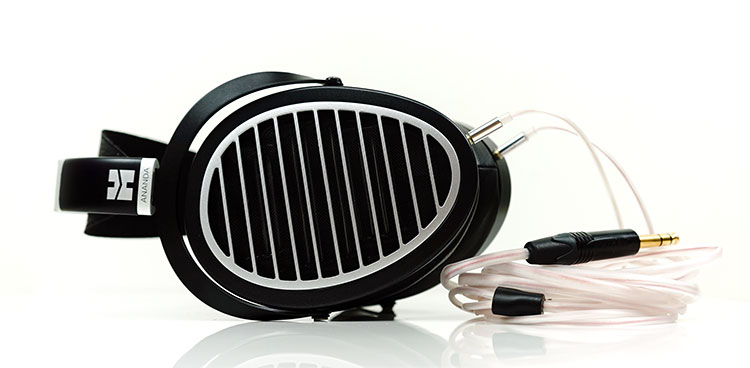Sound Impressions
Presentation
No question when you move from the DX200 to the DX220 will you not only hear a different presentation and tuning but also a jump up in technical capability, especially with efficient monitors, the new 3-stage gain option in combo with the new AMP1 MKII amp card.
The big difference for me beyond the super low-noise floor is the degree to which instrumental separation and clarity benefit from that black background as well as the tilt towards a more reference or neutral tuning than the older AMP1 sound. It sounds more expansive than before, airier, perhaps even more linear and accurate in its tuning.
Mind you, I do need to say that what applies in terms of noise and the black background the DX220 can achieve with the new amp card, we can also apply it to the other cards. You will get a lower noise floor, less hiss, and a far blacker background on all of the existing amp cards.
Timbre
The DX200/AMP1 sound has this slight bloom of warmth in the lower mids, nothing extreme but enough to create a little softness in the tone of the DX200. The DX220 timbre is more neutral to my ear, not as soft and not as warm but nothing I would describe as overly analytical or cold sounding.
The control on the treble presence on the AMP1 MK2 is excellent and partly why the DX220 sounds a little more neutral in timbre compared to the AMP1 first gen. It injects a little more odd-harmonic presence in the DX220 instrumental and vocal timbre so notes sound a touch cleaner and more articulate.
The accuracy and details levels seem to have gone up a notch even if the overall lower-midrange instrumental body drops down marginally.
Staging
This is perhaps where the magic is in the new DX220/AMP1 MKII combo and for a few good reasons. The first is the better treble extension of the new AMP1 card combined with a more forward presence. The second is the black background combined with the low-gain low-noise floor.
Both factors make the older AMP1/DX200 sound a little vaguer in placement, less holographic, and more center-focused. The DX220 sounds airier, delivers more headroom and, particularly in the mids, makes better use of its staging width for imaging cues and instrumental placement. You will hear a more spacious sound from this combo than before.
Depth is similar, but again the low-end on the DX220 sounds more spacious and linear to my ear. You swap that little bit of AMP1 first-gen mid-bass bloom for a tighter cleaner low-end performance.
Balanced
By far my preferred output option for both monitors and headphones. Whilst you do get a bump in output power and volume you will find the noise floor pretty darn low with sensitive monitors using the balanced output. That’s some excellent engineering there.
With more demanding headphones additional power will provide some welcome headroom and additional dynamic range at similar volume levels compared to the unbalanced option.
However, even with easier-to-drive IEMs, there was a difference. In particular, the low-end response with monitors such as iBasso’s IT04 sounded just that bit more physical and powerful sounding and its upper-mids/treble performance definitely has more presence than going unbalanced with the DX220.
Wireless Performance
As before with the DX200 Android 8, you can pretty much download any app you want from the APK Pure and Cool APK repository wirelessly as well as do OTA updates on the firmware on the Android platform of the DX220. APK Pure is the more friendly option as it is in English whereas Cool APK is in Chinese mostly.
The APK versions are not always the latest though but close enough to get going. You can access TIDAL, Spotify, SoundCloud, pretty much any streamer you want and it is not region locked either so those in a region that cannot normally access TIDAL via Google can do so on APK Pure.
Bit-Perfect & MQA
The real competitive advantage now of the DX220 with these streaming apps is the bit-perfect playback capability. Previously this was limited to just Mango. However, iBasso has expanded that across the OS as well as introduced MQA unfolding and rendering in TIDAL. You can see the actual bit rate in the top notifications bar when using the likes of TIDAL & Spotify.
There are no built-in DLNA services in the Mango app as yet so you will have to download a 3rd party service such as Plex or BubbleUPnP. Hi-Fi Cast will not work properly without Google services on the DX220.
Bluetooth Performance
Both the DX200 and the DX220 support Bi-Directional Bluetooth amp and DAC services. Both also support LDAC with Android 8.1 as their mutual platform. However, the DX220 goes one step ahead with BT5.0 as standard compared to BT4.2 on the DX220.
That should mean a better maximum range (depending on the selected data transfer rate), a faster data transfer rate up to 1.4Mbps net for enhanced audio streaming, and a much bigger packet size transfer capability. All of that s thrown in with Oreo’s built-in LDAC capability bringing the DX220 bang up to date for quality audio streaming.
We decided to do a short test between the two DAPs using the NeoFrontier Technologies Strength Meter app (sourced from APK Pure). Both DAPs were positioned about 1m away from a Huawei P20 smartphone with BT turned on. We were careful to ensure alignment was the exact same on both as the app is quite sensitive to positional changes.
At this range (1m), and accounting for any margin of error we did not see much of a performance difference in terms of the strength of the signal being identified by each BT receiver in the two DAPs.
At a distance of 4m however, a small gap did start to appear in terms of how strong the transmitting signal appeared to the DX220 compared to the DX200. I could deduce at this point that the physical location of the antennae outside the main aluminum chassis and into that cavity on the rear plate of the DX220 is also helping here in terms of signal strength.
Bi-Directional Performance
In terms of Bi-Directional connection performance using our P20 as the transmitter and the DX220 as the receiver in LDAC (Best effort adaptive bitrate), we could push as far away as any modern smartphone without a hint of drop out which was just excellent. Our usual distance is about 10m or slightly less with a wall between the P20 and the DX220.
However, once we pushed up to Optimized for audio data rates (990kbps) we found the drop out started 1-2 meters earlier with the same setup. I wouldn’t be terribly surprised by that and would consider that normal as the adaptive LDAC setting will adjust for the strength of signal anyhow.
One thing I have noted is the lack of LDAC labeling when receiving a signal in LDAC mode and the ability to switch those rates to fine-tune for stability and performance. These are still tucked away in the developer options which is a hidden option in Android’s main settings.
Wired Performance
USB-DAC
The current iBasso DAC driver for Windows 10 will work just fine with the DX220 as well as the DX200. You simply need to pick the ASIO driver for iBasso, fire up your relevant software, in this case, JRiver Media Center, and press play. For those that are worried about latency from movie-based audio or YouTube, I have yet to experience it in our tests
Bear in mind this is a full Femtosecond oscillator system being deployed here. That is two femtosecond oscillators for the XMOS, two Accusilicon femtoseconds for the DAC chips, and one femtosecond for the CPU clock. This is a serious DAC system in a portable media device and as such the sound is breathtaking for a DAP at this price point.
We played some Queen DSD64 tracks such as You Took My Breath Away and Who Wants to Live Forever and got a gloriously black background and a superb level of pinpoint detail using our Test IEM, the Solaris. The staging performance and level of clarity from the DX220 are immense.
My only feedback on USB-DAC playback is the lack of decoding rate information on the DX220 screen. It simply says DAC mode and nothing else. It would be excellent to see that in any future firmware update.
OTG Digital Audio
OTG Digital Audio worked just fine using a USB-C to micro-USB connection to our trusty RHA DACAMP L1 amp as well as FiiO’s Q5. If you are planning on using Mango as your playback on OTG Audio I did find that I had to connect each external amp once Mango booted.
Your mileage may vary depending on your external DAC/Amp but if you do not get audio playback immediately try inserting before you boot up Mango and also inserting also when Mango is open to see which one works best for you.
Matchability
Efficiency/Noise Floor
Oh wow! (technical term-Editor) What an impressive black background with the AMP1 MKII in both balanced and unbalanced format. The noise floor is so incredibly low less hiss than the DX200, even with the Solaris, (tested balanced and unbalanced). More than that, on zero volume I could not hear a hint of pervasive hiss with any of the gain stages, even high-gain.
The icing on the cake is the channel balancing at low volume. All three stages have the most impressive analog left-right balance going from zero upwards without any obvious bias to either channel on our Solaris test.
Yes, it is lower than the DX200 and absolutely lower than the DX150. Just in case you are thinking the accolades all belong to the AMP1 MKII I can tell you that the AMP8 card almost had the same level of performance.
I could not detect any pervasive hiss from the 3 gain stages and channel balancing was excellent with the Solaris, IT04, and the HUM Dolores. Kudos there for the redesign of the DX220 internals and getting that noise levels so low.
Synergy
EQ Tweaking
Given its reference tone and excellent levels of clarity, not to mention the low-noise floor, the DX220 can pair with just about any monitor in the market subject to personal preferences. Even then PMEQ and Graphical 1-band EQ can give you some necessary tweaks to help you fine-tune the final output to suit personal tastes.
Hum Dolores
A good example of this tweakability is the HUM Dolores pairing. It is also quite a clean reference type sound and paired with the DX200 you get tremendous amounts of clarity and instrumental separation as well as excellent staging.
However, for some, it might lack a little depth and body and for me, that can often be the case with Dolores for rock, not just with the DX220. It’s an achingly neutral pairing.
Firing up the DX220 PMEQ and choosing a peaking filter around 50Hz and increasing the gain by around 5-7dB I can inject more body and a little bit of sub-bass presence into the Dolores to deliver a little more physicality that is needed by EDM and hard rock lovers.
It is not a Solaris level of physicality but I think it makes a welcome difference to the pairing for a wider range of genres.
With the 10-band graphic equalizer, I found the effect slightly less focused but you can tweak a little additional low-end girth from the Dolores by pumping up the 30mHz to 200Mhz region and then again the 1-2k range to keep vocals clear of any additional low-end warmth on the DX220.
Campfire Audio Solaris
I have less need for any radical EQ tweaking with the Solaris. The clean, spacious and airy stock tuning sat well with Solaris’ excellent treble extension and didn’t overpower the dynamic driver’s gutsy low-end response.
What I enjoy doing, especially for female vocals on this pairing, is to use PMEQ and bump up the 1-4k range ab it more on the Solaris and really bring these to the fore. I am talking about keeping the Q Factor to around 0.7 and throwing in an 8-9dB gain around 2.5kHz for soloist tracks such as Dilelol’s Sleep, My Child by Halla Bassam, Eva Dahlgren Amel Kthyer.
The vocal presence was beautiful with the DX220/Solaris pairing with this adjustment and zero sibilance either. Admittedly the vocal is slightly on the breathier lower-pitch side but the lack of sibilance even with the enhanced gain on the PMEQ was very satisfying.
iBasso IT04
The IT04 may have been referenced when they tuned the IT04 because it sounds excellent, particularly with their own CB13 2.5mm terminated mono-crystal silver and copper 8-wire cable and the AMP1 MKII balanced output. The low-end is snappy, the clarity is excellent and the treble is articulate without ever sounding peaky.
However, the IT04 does have a fairly extended 8k peak and a bit of a 4k dip in its FR that sometimes I like to play with. With the DX200 PMEQ, you can do that easily and the resulting FR delivers a bit more upper midrange presence that I believe enhances the staging capability of this pairing and lifts a tiny bit of veil in the process.
Here I added a peaking filter around 4-5k with 7dB of gain and a Q-factor of 0.7 to tease out a bit more odd-harmonic balance and percussion presence. This is a personal preference by the way but it does go to show the power of PMEQ in monitor matching.
Power
The 1.2W per channel should be more than adequate to excellent for a number of moderately demanding planars and decent dynamic headphones.
Synergy
Meze Empyrean
Perhaps one of the finest headphones I have heard in 2019 it plays beautifully with a well-powered desktop amp of about 2 watts and above despite its fairly moderate 31.6Ω and 101dB SPL.
When powered out of the DX220 it will not collapse like a deck of cards with next to no dynamic range or difficulties in achieving a required level of volume in high-gain with that reasonable SPL rating. In High-gain it is a moderate 85/150 steps before it starts getting too loud. In fact, I think the pairing is excellent for a portable DAP and close to what I can get from a reasonable desktop amp Empyrean pairing.
Sure I can get a more powerful response with enhanced dynamic range with the likes of a flagship higher-powered amp such as the Formula S from Xi Audio but I honestly do not think you are being short-changed for detail with this pairing using high-gain and the AMP1 MKII’s balanced output.
The synergy is a touch more neutral than the richer sounding Auris HA-2SE tube amp so if you want just a little more wetness in your timbre and more low-end body I would opt for that desktop pairing.
If you feel the Empyrean lacks a little treble energy with the stock sound signature then hop right into the PMEQ settings with a peaking filter and target that 6-7k range with about 7-9dB and listen to how beautifully the DX220 handles the increase in treble presence.
Audeze LCDi4
I preferred the LCDi4 on a high-gain setting with the DX220/AMP1 pairing. At 30Ω and 100dB sensitivity, it will get loud enough on low-gain and medium but with high-gain, there was less endless moving of the volume dial upwards.
I found it sat very nicely around 75 steps in high gain, the dynamic range was good, and the staging was as expansive as I hoped it would be with a clean and somewhat neutral sound signature.
However, the LCDi4 is known to perform much better when EQ’ed, particularly its somewhat relaxed midrange which can lack a bit of presence on the DX220 stock sound signature. Audeze freely admits that by providing a route for using PMEQ out of ROON, their own app, and built into their Cipher cable for iOS.
With the DX2220 PMEQ and a peaking filter choice, you can easily bring up the midrange presence on the LCDi4 to a very satisfying level. I would say around 7dB gain around the 3k marker should be enough to produce a much more engaging midrange presentation on the LCDi4 with the DX220/AMP1 MKII combo.
Hifiman Ananda
This pairing is achingly neutral to my ears but not a cold or sterile sound either. The response is quite linear and those looking for a bit of punch and power might find themselves left wanting for more with this combo.
The power is fine, the Ananda is relatively easy to drive though it can scale with good amps. I had it a bit higher than the Empyrean though at around 95-100 in high-gain and that may well be more to do with the quest for more sub-bass presence than anything else.
The dynamic range I have no issues with either but pairing a very clean spacious AMP1 MK2 with such a neutral headphone will deliver more of a niche signature for those that like detail and clarity from the likes of acoustical genres where micro-detail is an absolute requirement for a good performance. Here this combo or pairing does very well.
If you are down with PMEQ then a peaking filter around 50Hz with around 3-4dB should be enough though to give the Ananda a bit more sub-bass presence and power to pair it better with EDM and R’n’B numbers.
Click On Page 5 below for Comparisons & Verdict

